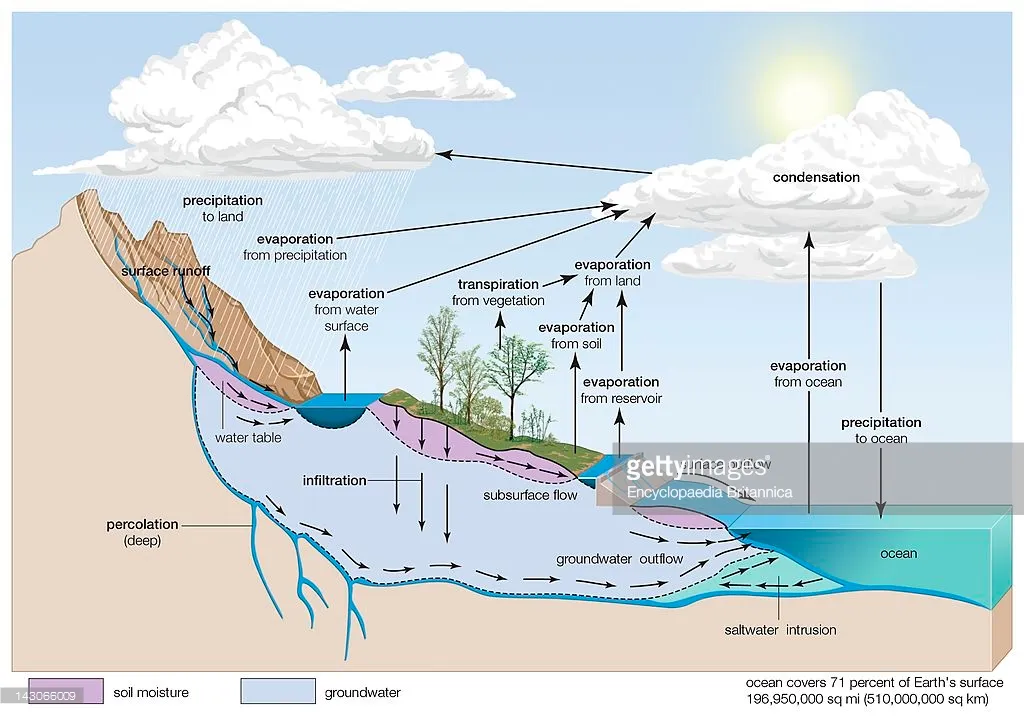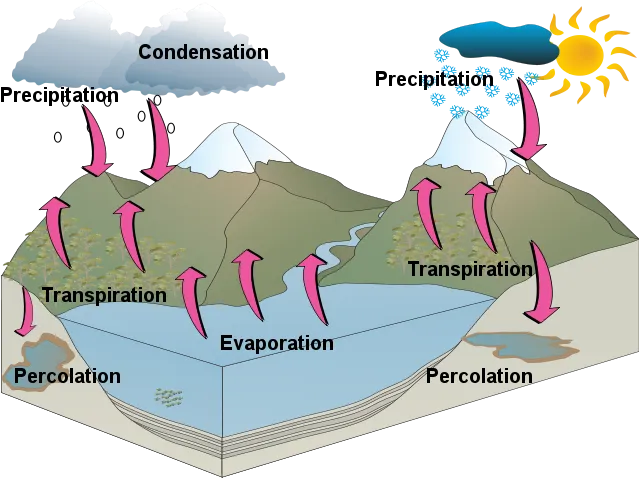
The hydrological Cycle is the most important carrier of water, energy and matter ( chemical biological material sediments etc), locally and globally.
The hydrological cycle acts like an enormous global pump that is driven Mainly by two forces, solar energy and gravitation pull.
The Incoming solar energy and Force water to evaporate from land and sea. Much of this vapour condensate and falls directly over the sea surface again (globally about 1/8 of the rainwater falls over the oceans). The reminder of the rain water falls over land ( globally about 1/8), and if falls as precipitation (rainfall, snow and/or hail).
This forms runoff as creeks, rivers and lakes on the soil surface. A major part, however, infiltrated through the soil surface and forms soil water ( water in the upper soil layers above the groundwater table, also called the understand zone) that may later percolate (deeper infiltration) down to the ground water table (ground water zone also called the saturated zone) level. In the ground, water can also be taken up by plant roots, and evaporate into the atmosphere through transpiration (evaporation through the plant leaves by plant respiration) or by direct evaporation from the soil.

The total evaporation from both soil and plants is called evapotranspiration